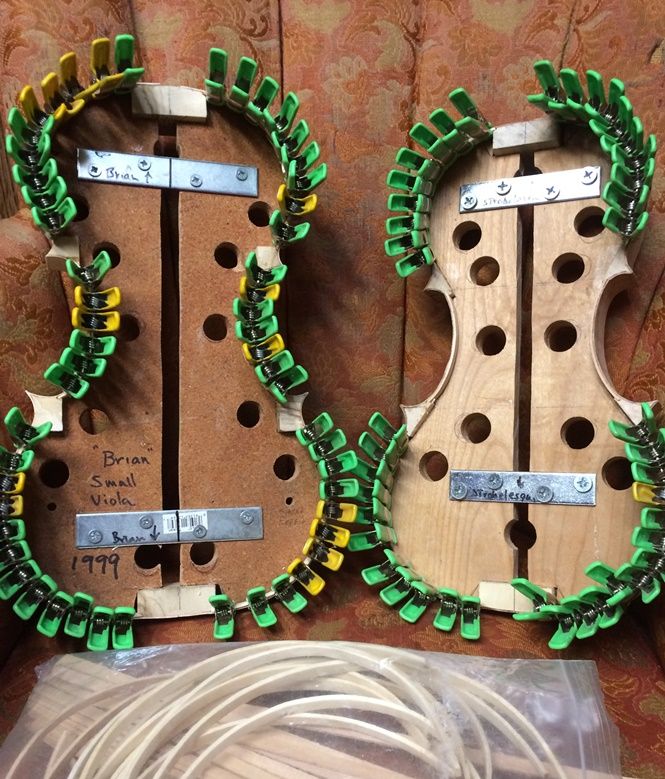Why Linings in a 5-string Fiddle?
What is the use of linings?
In most of the members of the violin family, including the five-string variants) there are narrow strips of wood glued to the inside of the ribs, all around the edges, called linings. On some double basses the linings are actually on the outside of the ribs, as well as the inside, following the edge of each rib. The purpose is the same in either case: it is to strengthen the very fragile rib material as well as tripling or quadrupling the thickness of the gluing surface at the edge of the rib. This is so that the rib garland can be securely attached to the front and back plates, also making it possible to remove those plates without breaking the ribs, when repairs are needed.
Wood for linings
I like to use willow for my linings when it is available, because it is easy to bend and fit to the ribs, as well as being very easy to carve, when it is time to taper those linings, and make them fair into the inside surface of the rib structure. Many makers use spruce, and I have done so as well, but have decided that I prefer willow. In fact, when I can get it, I specifically prefer Weeping Willow above anything else I have tried.
Installing linings
So…I arrived home fairly tired this evening, but I fired up the glue-pot, and prepared to install some linings: You can see the center bouts on the right-hand instrument’s ribs are already in place, making the edge 3 mm thick, instead of barely 1 mm.
When I pre-form the linings, I begin by using my bandsaw to cut a “plank” of willow, 3 mm thick, then thinning it to a very consistent 2 mm thickness. I use a “wheel-style” marking gauge, set to 7 mm width, to deeply score the “plank” along one edge, then flip it over and score the opposing face, effectively cutting the rib free from the “plank.” Then all I have to do is bend those linings blanks around my bending iron, and produce a pile of “ready-to-use” linings for my violin ribs (see below.)

I use a small sharp knife and a tiny gouge to make a small mortise in the junction between blocks and ribs (12 places on each face of the garland.) I only use hot hide glue on instruments, but the hot hide glue cools and gels rather quickly, so I cut the pre-formed linings to the proper length, and fit all of them into the garland, dry. One by one, I then remove each lining, coat it liberally with hot hide glue, and quickly re-insert it into the tight-fitting place prepared for it. I pinch hard, with my left forefinger and thumb, to squeeze the joint tight, and then use my right hand to apply a spring clamp. I move over a half-inch, and repeat, until the whole lining is tightly secured with glue and clamps. The little spring-clamps will hold the freshly glued linings in place until the glue hardens.
The same principle works for larger instruments, but the ribs are bigger, and I use bigger clamps.
Anyway, that is all I accomplished this evening. Possibly tomorrow I will get the rest of the linings into the other instruments.
Once the linings are in place, the ribs are a good deal less fragile, and less prone to breakage. That is a relief, as they are really easy to break, without the linings.
Follow along and see the whole build!
Thanks for looking!
